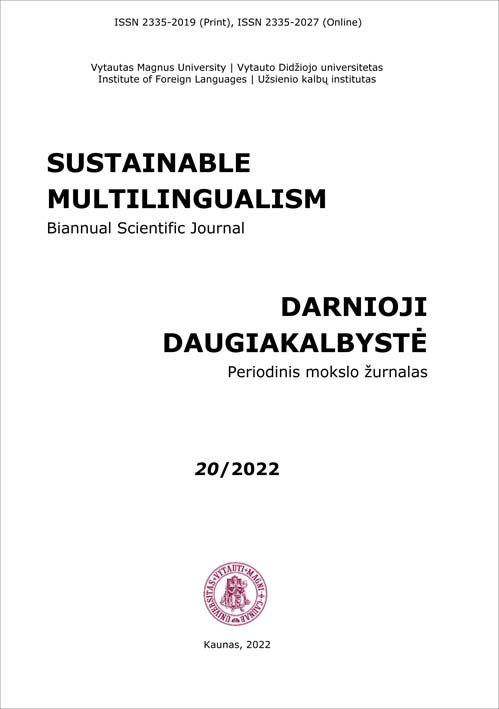Nature et acquisition des collocations lexicales en FLE
Lexical Collocations and Their Acquisition in French as A Foreign Language (FLE)
Author(s): Vitalija KazlauskienėSubject(s): Language studies, Language and Literature Studies, Foreign languages learning
Published by: Vytauto Didžiojo Universitetas
Keywords: Collocation; Co-occurrence; Corpora; French as a foreign language (FLE);
Summary/Abstract: The importance of stereotypical uses of language is recognized by most didactic studies of the vocabulary (Granger and Paquot, 2008). Collocations are an area of vocabulary which is difficult to master by non-native learners. This type of lexical relation often presents itself as a semi-frozen binary lexical co-occurrence. The meaning of collocations is often transparent in reception, while in production, it requires a special effort on behalf of the learner. In this paper, we have tried to verify this assertion by comparing the corpus of French language and that of learners, and to define the regularities of lexical combinations in the French interlanguage of Lithuanian learners with level B1. Thanks to the corpus at our disposal, we observed that nomino-adjectival collocations at this level are more frequent than verbal collocations. However, in the percentage of total, the number of collocations only represents a contingent part of the corpus. The corpus also reveals that the present combination of words is not always diversified either by its syntax or by its lexical content, which is sometimes atypical of standard French. Learners choose from a fairly limited number of rather free lexical units. The process of interference and hybridization can be seen as an essential contamination of collocations, both lexically and syntactically. The data received makes it possible to note that collocational competence is insufficient. The results of this study also show that the analysis of collocational constructions can reveal the relationships between competence and performance of speakers. / Pasikartojančių leksinių samplaikų vartojimo svarbą pripažįsta dauguma lingvodidaktinių leksikos tyrimų (Granger ir Paquot, 2008). Kolokacijos – tai leksikos sritis, kurią sunku išmokti negimtakalbiui kalbėtojui. Šio tipo leksinės samplaikos yra dvinarės, pusiau sustabarėjusios, su nusistovėjusia vartosena. Kolokacijų reikšmė dažnai būna skaidri vartotojams, bet mokiniams sunku parinkti tinkamas leksemas. Straipsnyje siekiama patikrinti šio teiginio relevantiškumą, palyginti prancūzų kalbos ir mokinių tekstynus bei apibrėžti leksinių samplaikų dėsningumus B1 lygio prancūzų kalbos kaip K2 besimokančių lietuvių tarpukalbėje. Tekstyno analizė parodė, kad šio lygio mokinių kalboje daiktavardinių kolokacijų su būdvardžiu skaičius yra didesnis už veiksmažodinių. Tačiau analizuojamo tekstyno bendras kolokacijų skaičius yra gan sąlyginis. Tekstynas taip pat parodė žodžių samplaikos sintaksinį ir leksinį ribotumą, kad kolokacijos ne visada atitinka standartinės prancūzų kalbos žodžių junginius. Besimokantieji renkasi dažnai kalboje pasikartojančius laisvus žodžių junginius. Interferencijos ir hibridizacijos procesai gali būti laikomi esmine kolokacijų kontaminacija tiek leksiniu, tiek sintaksiniu lygmenimis. Gauti duomenys leidžia konstatuoti, kad besimokantiesiems trūksta kompetencijų vartojant kolokacijas. Tyrimo rezultatai taip pat rodo, kad kolokacinių konstrukcijų analizė atskleidžia kalbėtojų kompetencijų ir atlikties santykį.
Journal: Darnioji daugiakalbystė
- Issue Year: 2022
- Issue No: 20
- Page Range: 194-209
- Page Count: 16
- Language: French

